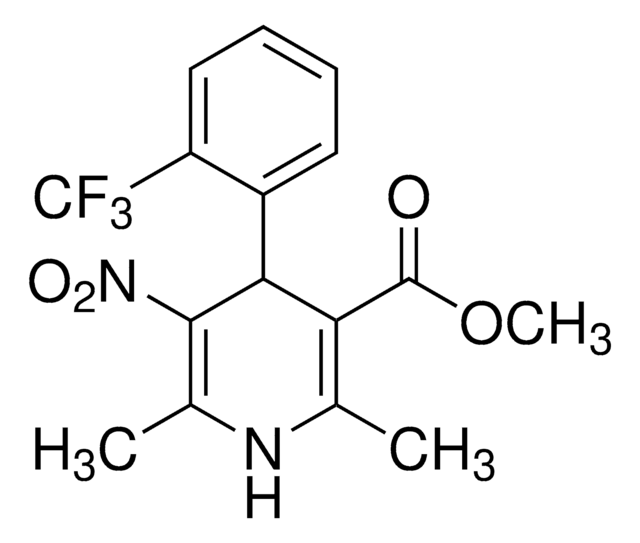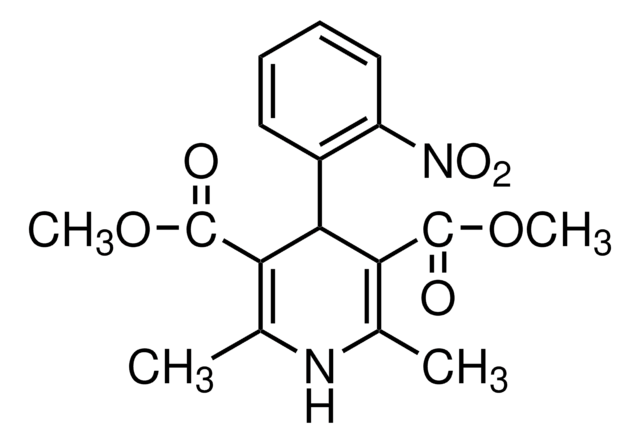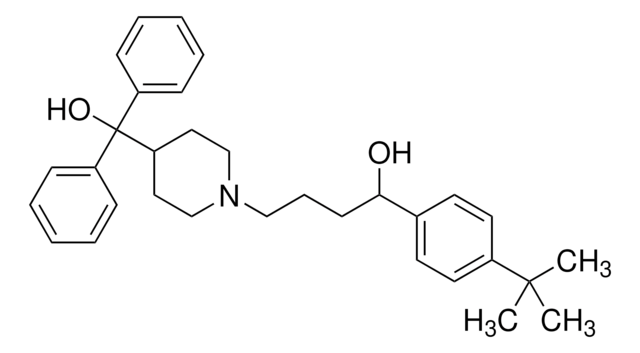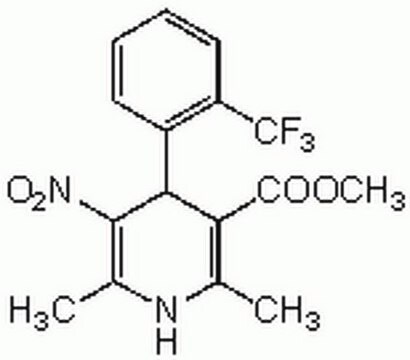Kluczowe dokumenty
B133
(S)-(−)-Bay K8644
≥98% (HPLC), solid
Synonim(y):
S-(−)-1,4-Dihydro-2,6-dimethyl-5-nitro-4-[2-(trifluoromethyl)phenyl]-3-pyridinecarboxylic acid methyl ester
About This Item
Polecane produkty
Próba
≥98% (HPLC)
Formularz
solid
kolor
yellow
rozpuszczalność
H2O: slightly soluble
ethanol: soluble (Organic solutions are stable for at least 20 days at RT.)
temp. przechowywania
2-8°C
ciąg SMILES
COC(=O)C1=C(C)NC(C)=C([C@H]1c2ccccc2C(F)(F)F)[N+]([O-])=O
InChI
1S/C16H15F3N2O4/c1-8-12(15(22)25-3)13(14(21(23)24)9(2)20-8)10-6-4-5-7-11(10)16(17,18)19/h4-7,13,20H,1-3H3/t13-/m0/s1
Klucz InChI
ZFLWDHHVRRZMEI-ZDUSSCGKSA-N
informacje o genach
human ... ADORA3(140)
rat ... Adora1(29290) , Adora2a(25369)
Szukasz podobnych produktów? Odwiedź Przewodnik dotyczący porównywania produktów
Opis ogólny
Zastosowanie
Działania biochem./fizjol.
Cechy i korzyści
Informacje prawne
Hasło ostrzegawcze
Warning
Zwroty wskazujące rodzaj zagrożenia
Zwroty wskazujące środki ostrożności
Klasyfikacja zagrożeń
Eye Irrit. 2 - Skin Irrit. 2
Kod klasy składowania
11 - Combustible Solids
Klasa zagrożenia wodnego (WGK)
WGK 3
Temperatura zapłonu (°F)
Not applicable
Temperatura zapłonu (°C)
Not applicable
Środki ochrony indywidualnej
dust mask type N95 (US), Eyeshields, Gloves
Wybierz jedną z najnowszych wersji:
Masz już ten produkt?
Dokumenty związane z niedawno zakupionymi produktami zostały zamieszczone w Bibliotece dokumentów.
Nasz zespół naukowców ma doświadczenie we wszystkich obszarach badań, w tym w naukach przyrodniczych, materiałoznawstwie, syntezie chemicznej, chromatografii, analityce i wielu innych dziedzinach.
Skontaktuj się z zespołem ds. pomocy technicznej









